#emperor antoninus pius
Photo
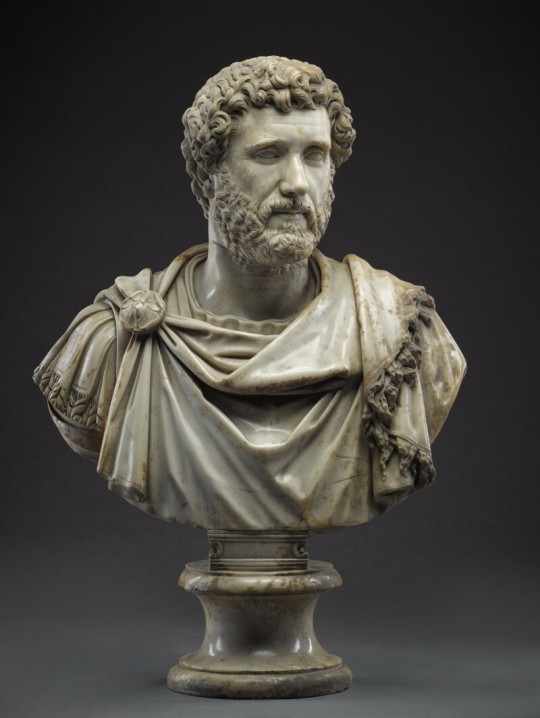
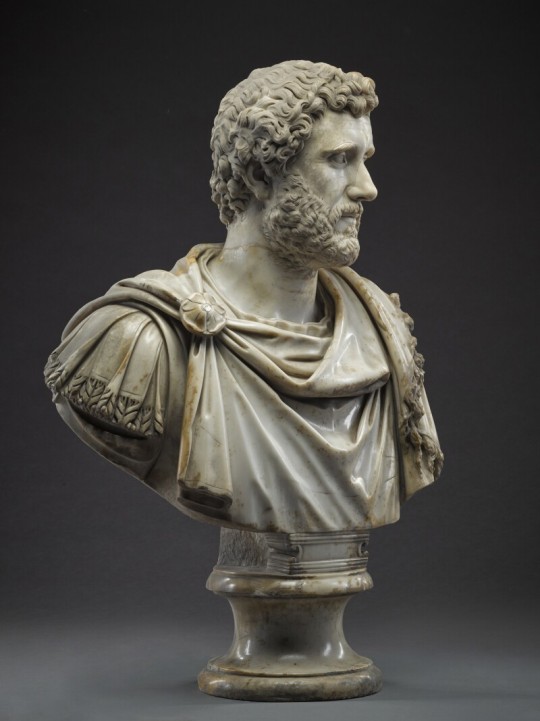

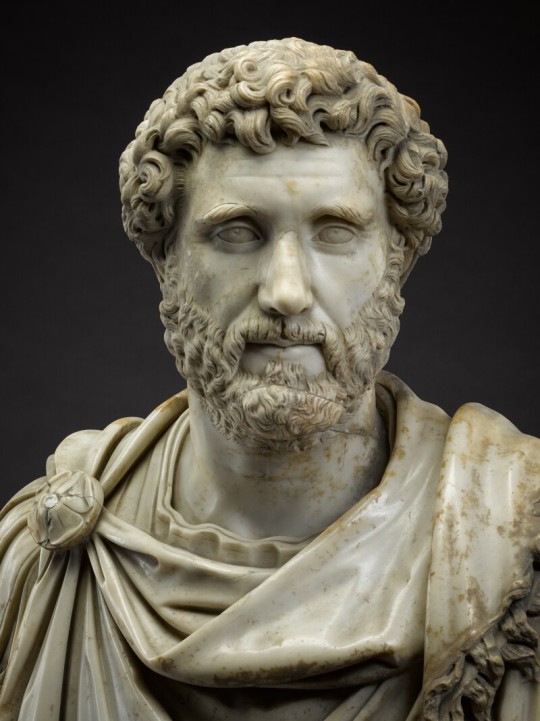
A Roman Marble Portrait Bust of Emperor Antoninus Pius
circa A.D. 140
Monumental in size, the emperor with his head turned to his left, his mature face with thoughtful countenance, full beard and moustache, deep-set eyes with incised irises and dotted pupils, and incised eyebrows, his thick hair radiating from the crown in long wavy locks and massed in rich deeply drilled and unruly voluted curls around the forehead and temples, and wearing a tunic, cuirass, and paludamentum fastened with a circular brooch on the right shoulder, the fringed hem of the cloak falling in zigzag folds from the left shoulder, the entire bust and its socle carved in one piece.
Height 97 cm.
Antoninus Pius (19 September 86 – 7 March 161) was Roman emperor from 138 to 161. He was the fourth of the Five Good Emperors from the Nerva–Antonine dynasty.
Born into a senatorial family, Antoninus held various offices during the reign of Emperor Hadrian. He married Hadrian's niece Faustina, and Hadrian adopted him as his son and successor shortly before his death. Antoninus acquired the cognomen Pius after his accession to the throne, either because he compelled the Senate to deify his adoptive father, or because he had saved senators sentenced to death by Hadrian in his later years. His reign is notable for the peaceful state of the Empire, with no major revolts or military incursions during this time. A successful military campaign in southern Scotland early in his reign resulted in the construction of the Antonine Wall.
Antoninus was an effective administrator, leaving his successors a large surplus in the treasury, expanding free access to drinking water throughout the Empire, encouraging legal conformity, and facilitating the enfranchisement of freed slaves. He died of illness in 161 and was succeeded by his adopted sons Marcus Aurelius and Lucius Verus as co-emperors.
#A Roman Marble Portrait Bust of Emperor Antoninus Pius A.D. 140#Emperor Antoninus Pius#marble#marble bust#marble statue#history#history news#ancient history#ancient culture#ancient civilizations#ancient rome#roman empire#roman emperor#roman history#roman art
127 notes
·
View notes
Text
people on the internet constantly fellating marcus aurelius for saying the most obvious shit. if that man had said “don’t kill yourself that shit make you die” sigma male dudebros on reddit would be pissing themselves over how profound it is
#same thing with trajan and hadrian#just saying if you ignore antoninus pius and nerva im throwing a brick through your window /nsrs#there were FIVE good emperors not THREE RAAAAAAGGGGGGHHHHHH
13 notes
·
View notes
Text
watching some lecture about the decline and fall of the roman empire (as in, the work of history by edward gibbon, not just the historical topic) and gibbon just got quoted as calling claudius "feeble". when it comes to the roman empire, my memory is a total sieve, and the only thing that I can ever remember is my middle-school happiness while reading i, claudius by robert graves so i have to be like wtf gibbon don't say that about my blorbo
#and then i read claudius the god in high school and didnt like it as much so maybe claudius isnt my blorbo after all#livia girlbossed too hard and tiberius was too pathetic and then too disgusting soon afterward...#theonly other roman emperor i can recall is antoninus pius for sending diplomats to china.#alternate history wherein imperial rome and imperial china were actively in contact ... imagine that slay ...
5 notes
·
View notes
Text
Octavian Family Headcanons (Updated)

Almost entirely dependant on the fact that Julia, Claudia and Octavian are all like big-wig historial Roman names and that they are all legacies.
Please ignore the fact that all these people are beautiful, this is not something I can change. Also, all the "Canes" are technically "Valerius Canus" or "Valeria Cana" but I didn't have the room to fit their entire names in, so they get the short versions.
In true Roman fashion, the first-born is usually named after a parent. Which is why you get Julius > Julia > Julia. And Claudius > Claudia.
The Canes of Julius' generation were originally very rich (owing to their Mercury heritage) but not very prestigious. They were typically members of the Fourth. Julius married Lucina, however, a member of the very prestigious Castellan families - and tradition members of the First Cohort. For this reason, all of Octavian's siblings are members of the First.
#octavian headcanon#octavian hoo#octavian pjo#all the canes are named after emperors#plus julius caesar#adrian = hadrian#marcia = marcus aurelius#antonina = Antoninus Pius
22 notes
·
View notes
Text






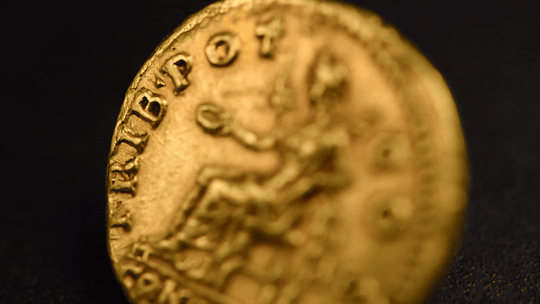
Roman Aureus of Emperor Antoninus Pius (2nd century CE)
#roman history#roman empire#gold#aureus#gold coin#high relief#numismatics#antoninus pius#roman emperor#hail caesar#2nd century ce#concordia#goddess of harmony#roman mythology#classical antiquity#western civilization
1 note
·
View note
Text
Roman Theater, Souks, Eid al-Fitr Amman Jordan

View On WordPress
#Amman Citadel#Amman Farmers Market#Bedouin Craftsman#Bedouin Tents#Egyptian Pharaoh Cleopatra VII of the Ptolemaic Dynasty#Eid al-Fitr Festival of Breaking the Fast#I&039;tikaf#Jabal Al-Jofah#Jordan Folklore Museum#Jordanian Museum of Popular Traditions#Nour al Barakah#Philadelphia Capital of the Roman Empire#Ptolemy Philadelphus#Ramadan#Roman Amphitheater Amman#Roman Emperor Antoninus Pius#Roman Triumvir Mark Antony#Souk el-Khodra#Souk el-Sagha#Souk Jara#Souk Mango
0 notes
Text

Aureus of Emperor Antoninus Pius, Roman, circa 147-148 AD
from The Yale University Art Gallery
278 notes
·
View notes
Text

Emperor Antoninus Pius (Roman 86-161 CE) National Roman Museum of Palazzo Massimo, Rome
294 notes
·
View notes
Text
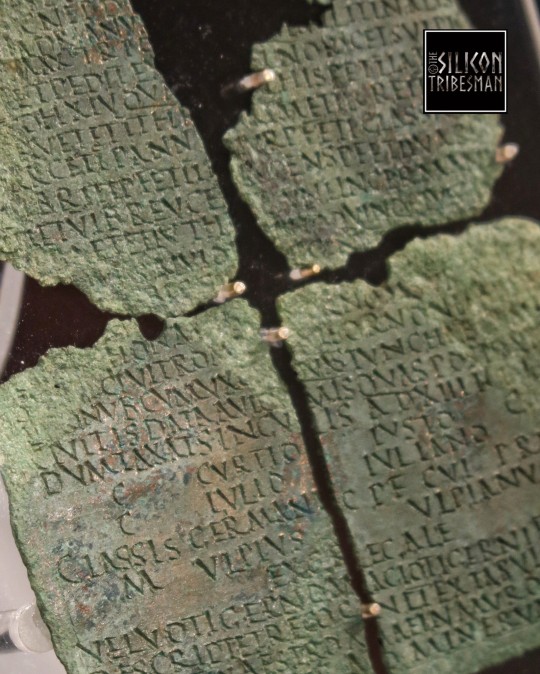
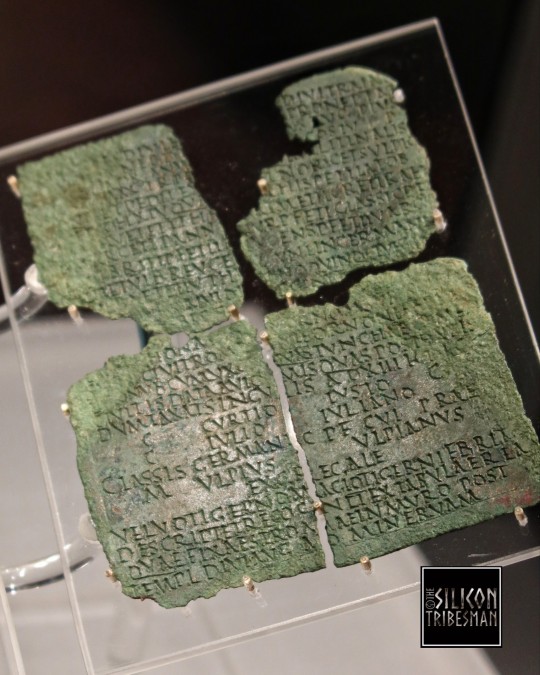

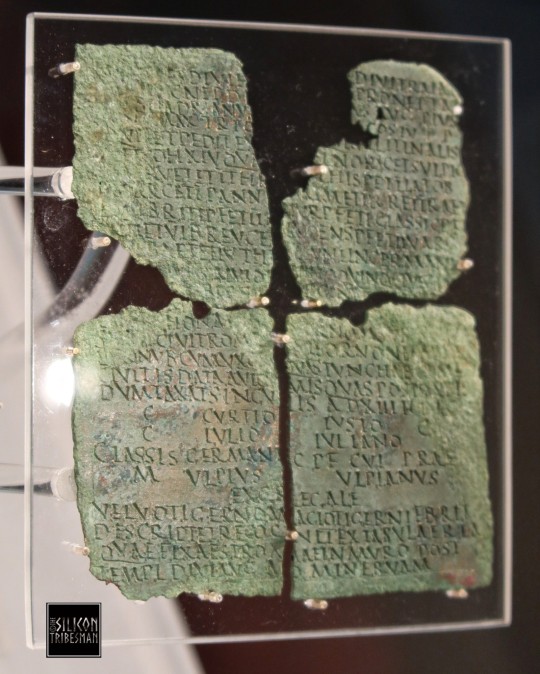
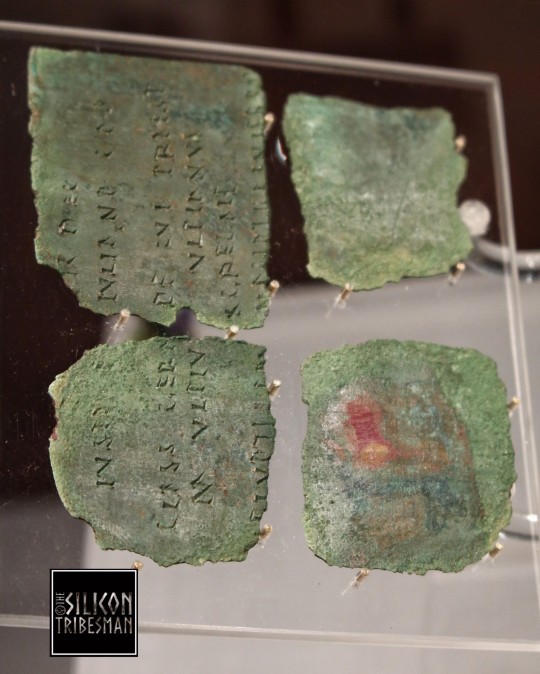
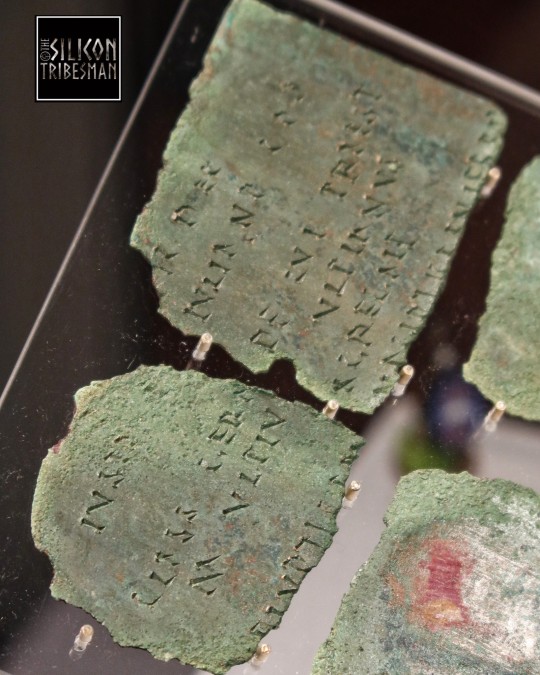
The Lanchester Roman Diploma
Found by a metal detectorist near Lanchester, Co. Durham, this is the first complete Roman Fleet Diploma to be discovered in the country and reveals the identity of one of Britain's first named sailors.
In the Roman Empire, there were citizens and non-citizens. Being a citizen gave you social and legal advantages. These included the right to own property, not pay some taxes and the right to have a lawful marriage. Most people in Britain at this time were not citizens. One way to become a citizen was to serve in the Roman army for 25 years, or the navy for 26 years. A diploma was the document that proved you had completed military service and could call yourself a Roman citizen.
The Lanchester Diploma was issued by the emperor Antoninus Pius (138-161 CE) to Veluotigernus, a Briton from Lanchester, County Durham, in around 150 CE. To earn his diploma, Veluotigernus had served in Classis Germanica, the Roman navy in Germany. We know his unit was based around Cologne, and that their main duties at this time were patrolling and logistics rather than combat.
It is unusual to be able to identify a local person from this period by name. Veluotigernus' British name ended with '-tigernus', which means 'king or 'master' This suggests that Veluotigernus was from a high-status local family. When he was honourably discharged from the navy, his name, according to the diploma became Titus Aelius Veluotigernus - illustrating that he, like many others, had embraced Roman culture. He is the second oldest known sailor in the country, and one of the few Britons we know to have served in the German fleet.
The diploma is made of a copper alloy. It consisted of two inscribed rectangular bronze plates,like pages in a book. The inside pages contained the complete text, whilst the outside had a shortened version, along with a list of seven witnesses. Each diploma was checked and then sealed to create a single document. It is very unusual to find a complete diploma.
Most diplomas were broken up, and the pieces passed to the recipient's children, allowing each of them to claim Roman citizenship. It is unclear what prompted Veluotigernus to bury the diploma rather than distributing the pieces amongst his close family.
The Museum of Archaeology, Durham University
#roman#diploma#roman fleet#sailor#lanchester diploma#archaeology#relic#artefact#text#metalwork#service#roman army#roman sailor#roman empire#romans
196 notes
·
View notes
Text
Wikipedia article that is only available in Spanish. I translated into English some abstract to share here. I always wanted to write a post about that "Antonine dynasty" fallacy. Luckily I found someone who explains much better

Ulpia-Aelia Dynasty
Ulpia-Aelia Dynasty is the new name proposed by Alicia M. Canto and adopted by a sector of current historiography to refer to the seven emperors of the Roman Empire, from Nerva to Comodo. Specifically includes emperors Trajan, Hadrian, Antoninus Pius, Marcus Aurelius and his co-emperor Lucius Verus.
Doctrinal approaches
Unlike other dynasties such as the Julio-Claudian dynasty, the Flavian dynasty or the Severan dynasty, there is no agreement in Ancient History on how to group and name the emperors of the 2nd century, "the best century in the history of Humanity" according the British historian Edward Gibbon.
The most used definitions from the 18th century until today have been and are "the Antonines", "the Good Emperors" and "the Adoptive Emperors". There were only two Antonine: Marcus Aurelius and Lucius Verus, and both were, above all, two Aelii (from the Aelia family). The adoptions were just a political cosmetic operation, but they did not comply with the ideal principles of adoption described by Galba or Pliny the Younger.
The inappropriateness of these three universal classifications is more evident in the face of the 48 ancient texts that demonstrate that throughout that century there existed an authentic dynasty, of Hispanic origins and roots, whose real link was not the adoptions, but the line of blood and kinship, entrusted to the women of the dynasty, who transmitted the legitimacy to inherit the throne: Pompeia Plotina, Vibia Sabina, Matidia the Younger, and both Annias, the so-called Faustina the Elder and Faustina the Younger, ending in Commodus.
After the elderly Nerva as a necessary introducer, the following six emperors: Trajan, Hadrian, Antoninus Pius, Marcus Aurelius, Lucius Verus and Commodus - externi (foreigners) according to the Roman historian Aurelius Victor - form an authentic lineage.
All this led Maria M. Canto to propose the term "Ulpio-Aelia", "the Ulpii Aelii", to define the true dynasty of Hispanic origin that goes from Trajan to Commodus (98-192 AD). Some ancient authors, such greek historian Herodian, demonstrate that the Romans themselves did see Commodus as a direct descendant of Trajan, katá thêlugonía ("by the maternal line"), that is, through the aforementioned empresses, and as "A fourth generation emperor".
The reason why names such as "the Antonine dynasty" or "the Antonine emperors" have universally triumphed is not found in ancient texts, but in the European historiography of the 17th and 18th centuries, whose arguments in this sense, although they do not find real foundation in the texts, have been so generally accepted until now.
The new proposal has already been accepted by authors such as José María Blázquez, the Italian expert Anna Maria Reggiani, among others, and the definition can be seen integrated even in some university subject programs. Although, without a doubt, two and a half centuries of historiographic tradition is still very decisive in favor of the other definitions in use.
Alicia María Canto y de Gregorio (Havana, April 23, 1949 – Madrid, March 4, 2024), known as Alicia M. Canto, was a Spanish archaeologist and epigrapher. In 2011 she was appointed corresponding academic of the Royal Academy of History.
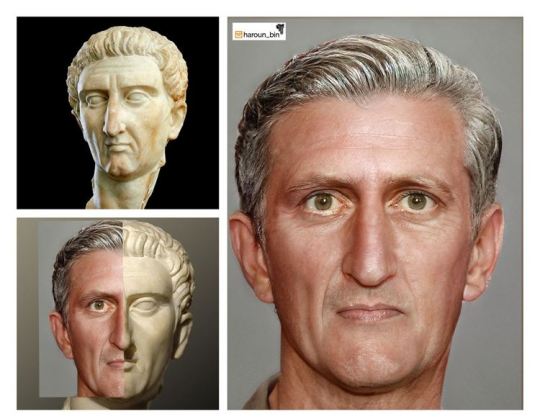
Nerva was chosen just as transitional ruler following the assassination of Emperor Domitian. Except him, the successors of "his dynasty" were related.
I'm really sick of hearing things such "Marcus Aurelius broke tradition by choosing moron Commodus just because he was his son; He made a serious mistake".
None of those emperors were chosen after going through a casting. Trajan's adoptive successor was his nephew, the only male relative he had, plus was married to Trajan's great-niece. Hadrian would have been emperor if Trajan had had a son? Marcus Aurelius and his wife Faustina were descendants of Trajan, he on his father's side and she on his mother's side. Marcus Aurelius did nothing more than continue the true tradition of his family.
Just as Augustus' dynasty is known as the Julio-Claudian, ending with Nero, Trajan's is the Ulpia-Aelia dynasty and ending with Commodus. And in my opinion the term Nerva Antonine dynasty, which I find in all English articles, simply doesn't make sense.
77 notes
·
View notes
Photo




Getty to Acquire Ancient Portrait Bust of Roman Emperor Antoninus Pius
First documented in 1851, the bust was previously unknown to scholars or the public.
The J. Paul Getty Museum is set to acquire an over-life-size ancient Roman marble bust of the emperor Antoninus Pius (ruled AD 138–161).
The work was purchased at auction in December; its final acquisition is subject to an export license being granted by the Arts Council England.
A prime example of Antoninus Pius’s main portrait type, the bust was created sometime after he ascended the throne in AD 138. With minor variations, this portrait type remained the emperor’s official image throughout his reign until AD 161. Carved from a single block of fine-grained white marble, the bust shows the emperor as a mature man with distinct facial features, a full, neatly trimmed beard, and thick curly hair. He wears a tunic, a cuirass (body armor), and a fringed paludamentum (a general’s cloak) folded in half and pinned at his right shoulder.
“This exquisitely sculpted and remarkably preserved portrait ranks among the finest of more than 100 versions of Antoninus’s image that have survived from antiquity,” says Timothy Potts, Maria Hummer-Tuttle and Robert Tuttle Director of the Getty Museum. “The bust adds a new highlight to the series of high-quality imperial portraits at the Getty Villa, including the full-length statue of Antoninus’ wife Faustina the Elder, and the busts of Augustus, Germanicus, Caligula, and Commodus.”
Born in Lanuvium to a family that had migrated to Italy from Nemausus in southern Gaul (today’s Nîmes in France), Antoninus was not groomed to become emperor. At the advanced age of 51, following a career as governor of the province of Asia and as Roman senator, he was adopted by Emperor Hadrian to be his successor. Antoninus’ long and exceptionally peaceful reign brought great prosperity to the Roman Empire, and the economy, culture, and artistic production flourished. The emperor started the dynasty of the Antonines, which lasted for more than two generations and ended with the death of Commodus in AD 192.
“Many objects in our collection were made in the Antonine period, as it is known today, including portraits, mythological sculptures, sarcophagi, and numerous other works,” says Jens Daehner, associate curator of antiquities at the Getty Museum. “The bust of Antoninus provides a firmly dated visual reference for what characterized Roman aesthetics during that period. On display in our galleries, the bust will convey to visitors how, for example, Antonine sculptors carved drapery folds, used drills to give texture to hair, or incised the eyes of their sitters.”
The marble bust was acquired in 1851 in Naples, Italy, by Robert Martin Berkeley (1823–1897), who brought it to his estate at Spetchley Park, Worcestershire, in England. It remained there with his heirs until it was offered at auction late last year at Sotheby’s, London. Although documented in the estate’s archive, the bust was previously unknown to the public or scholars.
Once acquired, the bust of Antoninus Pius will go on display in the Getty Villa’s Later Roman Sculpture gallery with its selection of other Antonine period portraits.
#Getty to Acquire Ancient Portrait Bust of Roman Emperor Antoninus Pius#portrait bust#marble bust#marble sculpture#ancient artifacts#history#history news#ancient history#ancient culture#ancient civilizations#ancient rome#roman history#roman empire#roman art#emperor antoninus pius
66 notes
·
View notes
Text
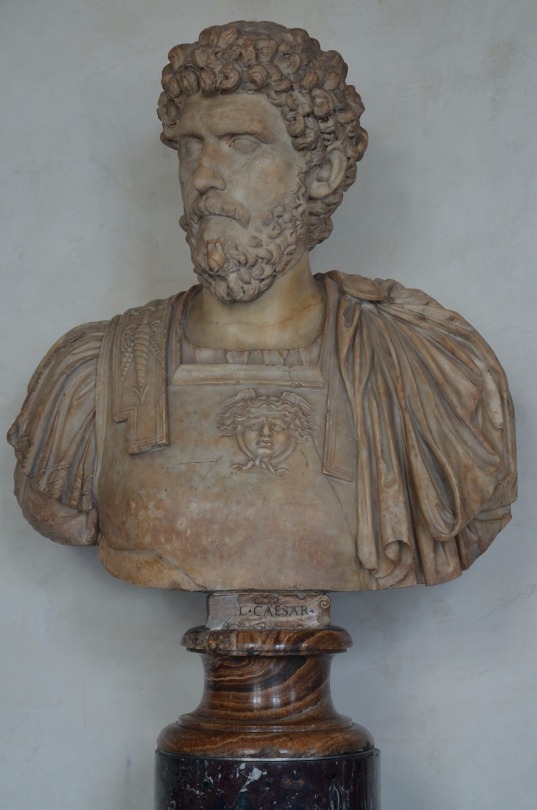
Lucius Aelius Caesar, intended heir to Hadrian. Born Lucius Ceionius Commodus on 13 January 101 CE, he was abruptly adopted by Hadrian in 136, after a near-fatal hemorrhage convinced the emperor that a designated successor was needed. (The move angered two men who had thought themselves in line for the position, Hadrian's brother-in-law Servianus and his grandson Fuscus Salinator. Claims of a planned coup circulated, and Hadrian had both men executed, which cast a dark cloud over the last years of his reign.) Lucius Aelius himself was in poor health and predeceased Hadrian on 1 January 138. In his stead, Hadrian adopted the future Antoninus Pius and compelled Antoninus in turn to adopt two heirs: the future Marcus Aurelius and Lucius Aelius' son, the future Lucius Verus.
Portrait bust by an unknown artist, 2nd century CE. Now in the Galleria degli Uffizi, Florence. Photo credit: Carole Raddato.
#classics#tagamemnon#Ancient Rome#Roman Empire#ancient history#Roman history#Lucius Aelius Caesar#art#art history#ancient art#Roman art#Ancient Roman art#Roman Imperial art#sculpture#portrait sculpture#portrait bust#Uffizi#Uffizi Gallery#Galleria degli Uffizi
123 notes
·
View notes
Text

The Temple of Hadrian (Templum Divus Hadrianus, also Hadrianeum) is an ancient Roman structure on the Campus Martius in Rome, Italy, dedicated to the deified emperor Hadrian by his adoptive son and successor Antoninus Pius in 145 CE. This temple was previously known as the Basilica of Neptune but has since been properly attributed as the Temple of Hadrian completed under Antoninus Pius. x
238 notes
·
View notes
Text
In a first, coin bearing zodiac found off Israel's coast
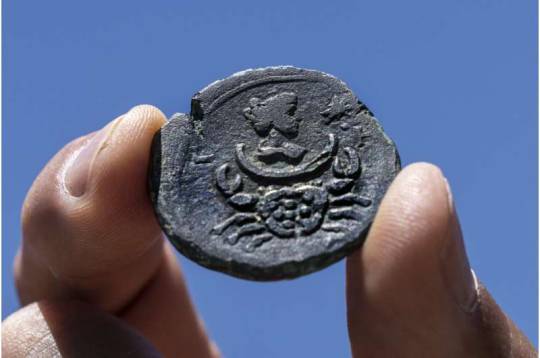
Israel's Antiquities Authority said Monday it has discovered a rare 1,850-year-old bronze zodiac coin during an underwater survey off the coastal city of Haifa.
The coin bears the image of the zodiac sign Cancer behind a depiction of the moon goddess Luna.
Experts say the coin was minted in Alexandria, Egypt, under the rule of the Roman Emperor Antoninus Pius, who ruled between the years 138–161 A.D. It is part of a series of 13 coins depicting the 12 zodiac signs and one of the entire zodiac wheel.
The antiquities authority said it was the first time such a coin has been found off the Israeli coast. Read more.
838 notes
·
View notes
Text

Gold seal ring bearing the name of the Roman emperor Antoninus Pius translated into Egyptian hieroglyphs.
📷 : hellenistichistory
209 notes
·
View notes
Photo
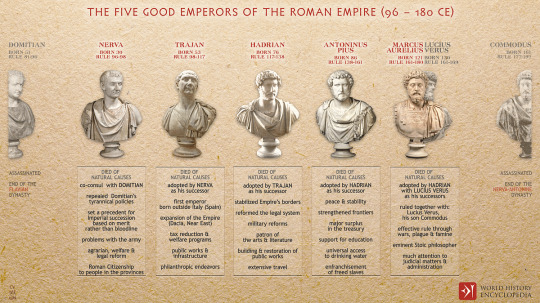
The Five Good Emperors of the Roman Empire (96 - 180 CE)
An infographic illustrating the succession of Roman rulers between 96 and 180 CE, known as the Five Good Emperors (a term unknown to the ancient Romans, coined by Nicolo Machiavelli in his 1531 manuscript Discourses on Livy and made widely popular by Edward Gibbon in his 18th century The History of the Decline and Fall of the Roman Empire,) Nerva, Trajan, Hadrian, Antoninus Pius, and Marcus Aurelius. Those were everyone but two of the Nerva-Antonine Dynasty, with Lucius Verus and Commodus not making the cut. During the time of this “kingdom of gold” (Gibbon), the Roman Empire “was governed by absolute power under the guidance of wisdom and virtue.” (Gibbon) The 84-year period is widely accepted as the high point of the Empire, with Imperial Succession ensured through adoption based on merit and acceptance rather than a strict bloodline.
Image by Simeon Netchev
76 notes
·
View notes